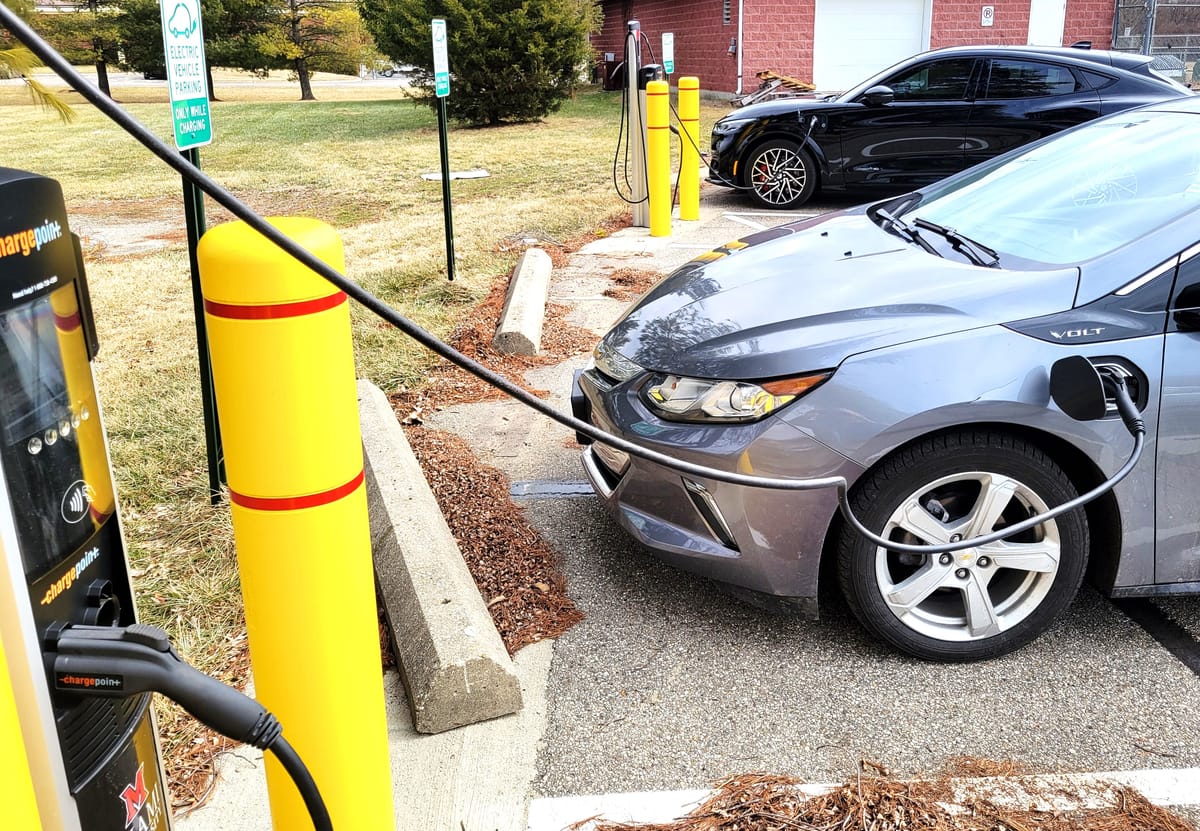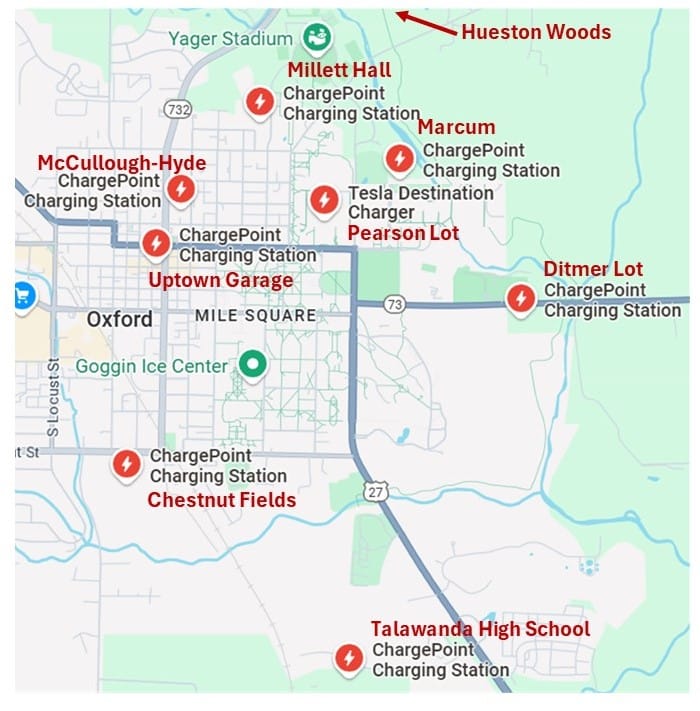EVs in Oxford: Range anxiety
Driving an electric car comes with a built-in fear of running out of charge on long trips, but James Rubenstein writes that local EV drivers manage that anxiety with careful planning.

Talk to anyone who’s skeptical about owning an electric vehicle, and they’ll probably cite range anxiety — the fear of running out of charge — as a major factor in their decision.
In last week’s edition of EVs in Oxford, I wrote about how driving an EV around Oxford is more convenient than driving a gas car, and trips to Cincinnati and Columbus are well within range. It’s the longer-distance trips that start to generate more anxiety around running out of charge.
Former EV owner Mark Biales admits, “I’ve always had a bit of range anxiety, and one time I got to a supercharger up in Cleveland with just one mile left.” Bill Snavely hesitates taking his EV on long trips. “I really don't like the anxiety of estimating whether I can make it to the next Level 3 charger safely,” he told me.
J.D. Power reports that while it is possible to run out of charge, today’s EVs give drivers multiple visual and audio warnings that are impossible to ignore. Most EVs go into so-called “turtle mode,” conserving the remaining power to keep the vehicle moving at a very low speed until a charger is reached, or at least the vehicle can be moved to a safe space.

When EVs were first becoming widely available, the AAA tested a fleet of trucks to provide mobile recharging but found that the service was needed too rarely to justify continuing it because EV drivers pay attention to their remaining range. Instead, the AAA now tows dead EVs to nearby chargers when necessary.
In California, home to one-third of all U.S. EVs, charging stations are sometimes fully occupied. Last Christmas, photos showed very long lines. However, around here, Brett Smith reports “in general, our experience with the super chargers has been good. We've never had to wait for a charger to open.”
The word that keeps coming up among Oxford’s EV drivers is planning. “You have to plan on longer trips where you will charge and account for the time,” Kathleen Knight-Abowitz told me. David Prytherch agreed, saying it “takes a little planning with the apps.” Today’s EVs tell you when and where to stop to recharge, and phone apps let you know if the chargers are in use or available. Biales and Smith both pointed out that the range on an EV drops considerably in cold weather.
Prytherch and Kathleen Veslaney frequently drive 160 miles to Athens, Ohio. “We can easily get there with plenty of battery left,” and they find that recharging in Athens is easy. “We use the free Level 2 chargers in Athens or free Level 3 chargers in Nelsonville, [so] it's possible for us to get there and back at no cost.”
When Rob and Kathleen Knight Abowitz drive to Columbus to see their daughter, they do “an easy charge there on the west side of town.” When they drive to Chicago to see their son, they typically stop at a Level 3 charging station in Carmel, Indiana, near Indianapolis. “We now build in the charging time for eating meals, for relaxing, for whatever. It's a mental adjustment as much as anything.”
Larry Slocum, who drives his EV frequently to Minnesota to see family, scoffed when asked about range anxiety. “It’s safe practice to stop and rest every two or three hours anyway. So I stop and recharge. With a fast charger, you can get to 80% quickly, and that gets me 200-250 miles, plenty of range before I stop again to rest.”
James Rubenstein is president of the Board of Directors for the Oxford Free Press and professor emeritus of geography at Miami University.




